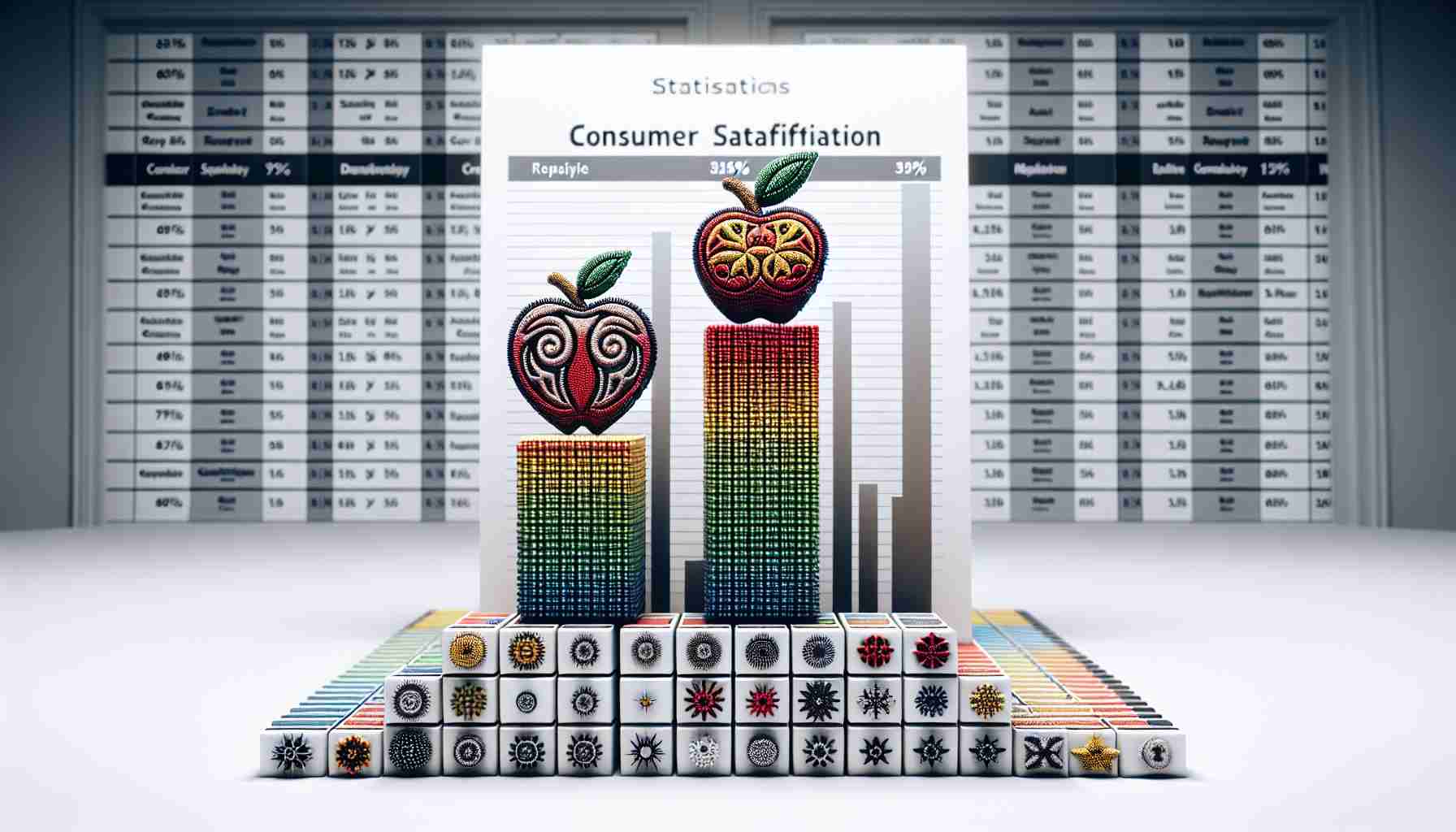In the competitive arena of smartphone technology, Apple and Samsung have emerged as leaders in the recent American Consumer Satisfaction Index. Both tech heavyweights scored an impressive 82 out of 100, indicating a tie in customer contentment. This success is tied to their focused improvements in areas such as user interface design and premium display quality, based on the feedback of thousands of consumers.
The advancements are not exclusive to the two market leaders. Samsung has gained particular praise for their pioneering screen technologies, enhancing the visual engagement of their devices, while updates to their One UI interface have notably bettered the user experience.
Other mobile phone producers grow in popularity, although not as dramatically as the frontrunners, and Google has recognized a need for development following a slight decrease in their own satisfaction scores.
Mobile network providers also highlighted in the study showed an uptick in customer satisfaction. AT&T led this category with a slight advantage over T-Mobile, pointing to increasing consumer approval in service quality and dependability across the board.
The insights obtained from the ACSI study are invaluable to consumers making informed choices, as well as the companies striving for excellence in the industry. Repeat purchases and brand loyalty hinge significantly on customer satisfaction, stressing its importance in such a rapidly evolving and innovative market.
To maintain this coveted customer satisfaction, challenges such as managing the balance between introducing cutting-edge features and maintaining affordable pricing, ensuring sustainably manufactured products, and safeguarding data privacy stand in the foreground.
While there are clear advantages to high customer satisfaction, including increased brand loyalty and lower churn rates, it can also raise consumer expectations and pressure companies to constantly innovate. The full implications of these dynamics on the smartphone industry and customer satisfaction can be further explored through relevant resources provided by Samsung, Apple, and the ACSI.
Apple and Samsung’s Top Satisfaction Scores
Apple and Samsung’s tie in the American Consumer Satisfaction Index at 82 out of 100 reflects the high bar these companies set for the smartphone industry. Their focus on user interface design and premium display quality echoes consumer demands for intuitive, aesthetically appealing, and high-performing devices. The feedback from thousands of consumers offers valuable insight into what aspects of a smartphone are most valued by users, leading to targeted improvements by these companies.
Technological Innovation and User Experience
Samsung’s advancements in screen technology, such as OLED and bezel-less designs, have positioned it as a leader in display innovation. Additionally, improvements to Samsung’s One UI interface demonstrate the company’s commitment to refining the user experience beyond hardware enhancements, catering to a broader range of user preferences and accessibility needs.
While the article does not mention it, it’s worth noting that Apple’s dedication to customer privacy and security has been an essential factor in its high satisfaction ratings. Apple’s iOS platform is designed with privacy in mind, offering users various tools to control their data and privacy settings.
Competitive Landscape
Other mobile phone manufacturers continue to grow in popularity, even if their gains do not match those of the leading brands. Google’s slight decrease in satisfaction scores indicates that even tech giants must remain vigilant against complacency and continuously seek feedback for improvement.
Mobile Network Providers
The discussion of mobile network providers shows an interconnected sphere where hardware and service quality converge. AT&T’s leading position suggests that consumers value network reliability and service quality highly. T-Mobile’s comparative position indicates a competitive sector where customer satisfaction can play a decisive role in brand choice.
Challenges and Controversies
The article raises important challenges in the industry, such as balancing cutting-edge features with affordable pricing—a concern considering the rising costs of premium smartphones. Sustainable manufacturing has also become a key issue, as consumers and regulators increasingly demand environmentally responsible production practices. Additionally, data privacy remains a controversial topic, with tech companies under scrutiny for how they handle user data.
Advantages and Disadvantages of High Customer Satisfaction
High customer satisfaction can increase brand loyalty and decrease churn rates. However, it can also lead to raised consumer expectations, creating pressure for ongoing innovation. Companies must navigate these advantages and disadvantages carefully to sustain their position in the marketplace.
For further exploration into these topics, visiting the official websites of the involved companies could offer additional insights and official statements regarding customer satisfaction and technology strategies:
– Apple
– Samsung
– The American Consumer Satisfaction Index (ACSI)
Understanding customer satisfaction in the smartphone industry requires a multifaceted approach, taking into account the numerous factors that impact a consumer’s decision-making process and overall satisfaction with their mobile device.
The source of the article is from the blog crasel.tk
